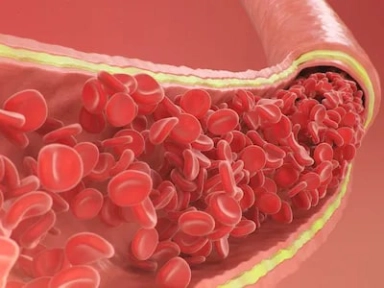Public health recommendations for Lp(a) measurement
Measurement of lipoprotein (a): Benefits, barriers and recommendations.
Key Takeaway
Key Benefits
- Identifies high-risk individuals
- Improves management of patients with elevated Lp(a)
- Clinical and economic benefits to healthcare system and society*
- Helps development of epidemiological data
Key Barriers
- Perception that the measure may have limited clinical value
- Lack of awareness on Lp(a) and of data on the CV benefit of reducing Lp(a)
- Technical barriers, clinical guidelines barriers, and healthcare system barriers
Key Recommendations
- Educational campaigns for physicians and patients on Lp(a) and its role in ASCVD
- Collaboration of scientific communities and industry to address technical challenges and deficiencies in clinical guidelines
- Policy intervention for national ASCVD plans to acknowledge the importance of Lp(a)
Why This Matters
- Elevated Lp(a) concentration (>50 mg/dL or ~105 nmol/L), is an inherited risk factor for ASCVD and the most common form of hyperlipidemia
- Clinical guidelines recommend Lp(a) measurement as a routine part of clinical assessment in high-risk individuals
- Uptake of Lp(a) concentration measurement is limited
- Lack of specific pharmaceutical treatment for elevated Lp(a) is perceived as a limitation to effectively prevent ASCVD risk
This study investigated the clinical utility of measuring Lp(a) concentrations for patients, its economic benefit to healthcare systems and society, and barriers that may limit the uptake of measurement of Lp(a) concentration; it also provided policy recommendations that would help addressing those barriers.
Study Design
Two-step analysis was carried out to answer the research questions
Step 1
- Structured literature review† (of publications from 2016 to 2020) was performed to identify:
- Economic and health benefits and costs of measuring Lp(a) concentration
- Potential barriers to the uptake of the measure
- Potential solutions to address them
Step 2
- Literature review-findings were discussed with an advisory board attended by European- and United States-based clinical, policy and bioethics experts together with patient organizations from both regions
- Anecdotal evidence was collected from three European patients via anonymous interviews
Key Results
A total of 88 publications were considered for the analysis.
Benefits of Measuring LP(a) Concentration
| Benefits to Patients |
|
| Benefits to Healthcare System |
|
| Other Benefits |
|
Barriers to the Uptake of LP(a) Measurement
| Limited Perception of Value and Lack of Awareness of CVD Risk |
Physicians: May have a limited perception of the clinical utility of the Lp(a) test due to unavailability of therapeutic option for high Lp(a) Patients: May lack awareness of family history of ASCVD or of elevated Lp(a) concentrations |
| Technical and Clinical Guidelines Barriers |
|
| Healthcare System Barriers |
|
| Other Barriers |
|
Policy Recommendations to Support a Wider Uptake of LP(a) Measurement
| Type of Barrier | Policy Recommendations Value Perception and Lack |
| Value Perception and Lack of Awareness Barriers |
|
| Technical and Clinical Guidelines Barriers |
|
| Healthcare System Barriers |
|
For additional details, please refer to the source publication, Catapano AL, et al.
*Before the availability of Lp(a) lowering pharmacological treatments
†Via google scholar and PubMed
ASCVD, atherosclerotic cardiovascular disease; CV, cardiovascular; CVD, cardiovascular disease; Lp(a), lipoprotein (a).
- Catapano AL, Daccord M, Damato E, Humphries SE, Neely RDG, Nordestgaard BG, et al. How should public health recommendations address Lp(a) measurement, a causative risk factor for cardiovascular disease (CVD)? Atherosclerosis. 2022;349:136–143. doi: 10.1016/j.atherosclerosis.2022.02.013. PMID: 35292153.


.webp/jcr:content/Lipid-lowering-therapy-thumb%20(2).webp)

.webp/jcr:content/Evaluation-of-lipid-management-following-ACS-thumb%20(1).webp)